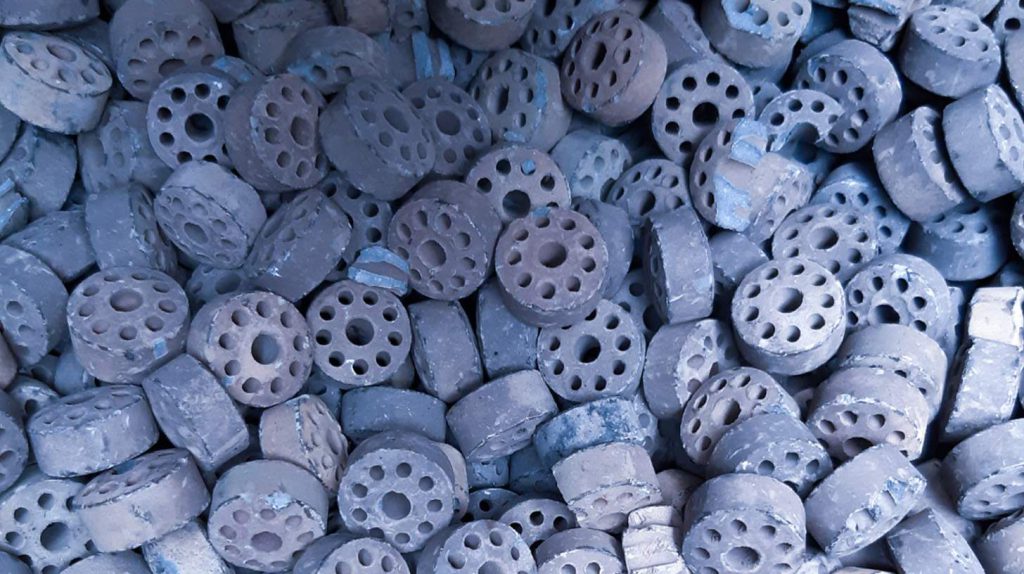Spent catalyst recycling through thermal desorption offers users in the petrochemical industry a cost-effective and more environmentally friendly alternative to disposal.
Thermal desorption enables processors to reduce their waste management and new catalyst costs. In addition, thermal desorption technology enables processors to recover precious metals, like nickel, vanadium, molybdenum, and platinum.
Here are a few benefits of using thermal desorption to process spent catalysts.
- Safer and cleaner
- More affordable than other disposal methods
- Destroys hazardous materials
- Clean, safe, reliable, and efficient solution
- Adapts and meets throughput temperatures
- Fast material separation
- Can reclaim precious metals

1- Safer and cleaner
Spent catalysts are considered solid waste and are highly regulated by environmental agencies such as the EPA. However, by processing spent catalysts through Thermal Desorption Units (TDU), this solid waste is converted into an EPA ‘delisted’ material. Today’s thermal desorption systems involve spent catalyst recovery processes that are safer and cleaner to operate than chemical processes, creating a delisted end-product that is ready for disposal.
2- More affordable than other disposal methods
“Spent” catalysts are strictly regulated due to environmental concerns, and considering landfill disposal is unacceptable, companies suffer big financial expenses. Today’s innovative waste management systems remove the hydrocarbons from spent catalysts, recovering valuable materials such as nickel, vanadium, molybdenum, and platinum.
3- Destroys hazardous materials
Today’s thermal desorption technology is designed to process spent catalysts and separates metals from the catalysts’ material. Once processed, the remaining material is considered ‘delisted’ and can be disposed of easier and more cost-effectively. The process also destroys hazardous materials that are sometimes mixed with the spent catalysts.
4- Clean, safe, reliable, and efficient solution for spent catalysts
Thermal desorption technology is a clean, safe, reliable, and efficient solution for managing wastes. Through this process, waste streams are remediated, delisted, and commercially valuable materials recycled – all through a single all-in-one system.
This process maximizes the recovery of hydrocarbons and valuable metals from the feedstock while drastically reducing and in some cases eliminating the amount of waste requiring landfill disposal.
5- Adapts and meets throughput temperatures
Thermal desorption is commonly used to process organic materials such as oil-bearing material from refineries. Thermal desorption can be customized to adapt and meet the throughput and devolatilization temperatures required.
6- Fast material separation
Thermal desorption systems can clean over 20 tons of polluted soil per hour. Tough to process streams such as mixed hazardous waste are quickly and safely remediated.
The time it takes to clean up a site using thermal desorption depends on the amount of polluted material, the condition of the material, and the type (and amounts) of harmful chemicals present.
7- Can reclaim precious metals
Spent catalysts contain large amounts of recoverable hydrocarbons and may contain precious metals that can be recycled at a high value. The separated solids from soil remediation can be repurposed for profitable use applications.
Processing spent catalyst in a thermal desorption unit separates and reclaims the hydrocarbons, reducing the waste for disposal and prepares the solid materials for recovery of the metals.
Learn more about our catalyst recycling services
Conserve resources, save costs, and reduce waste and landfill burden with The Amlon Group’s catalyst recycling services.



